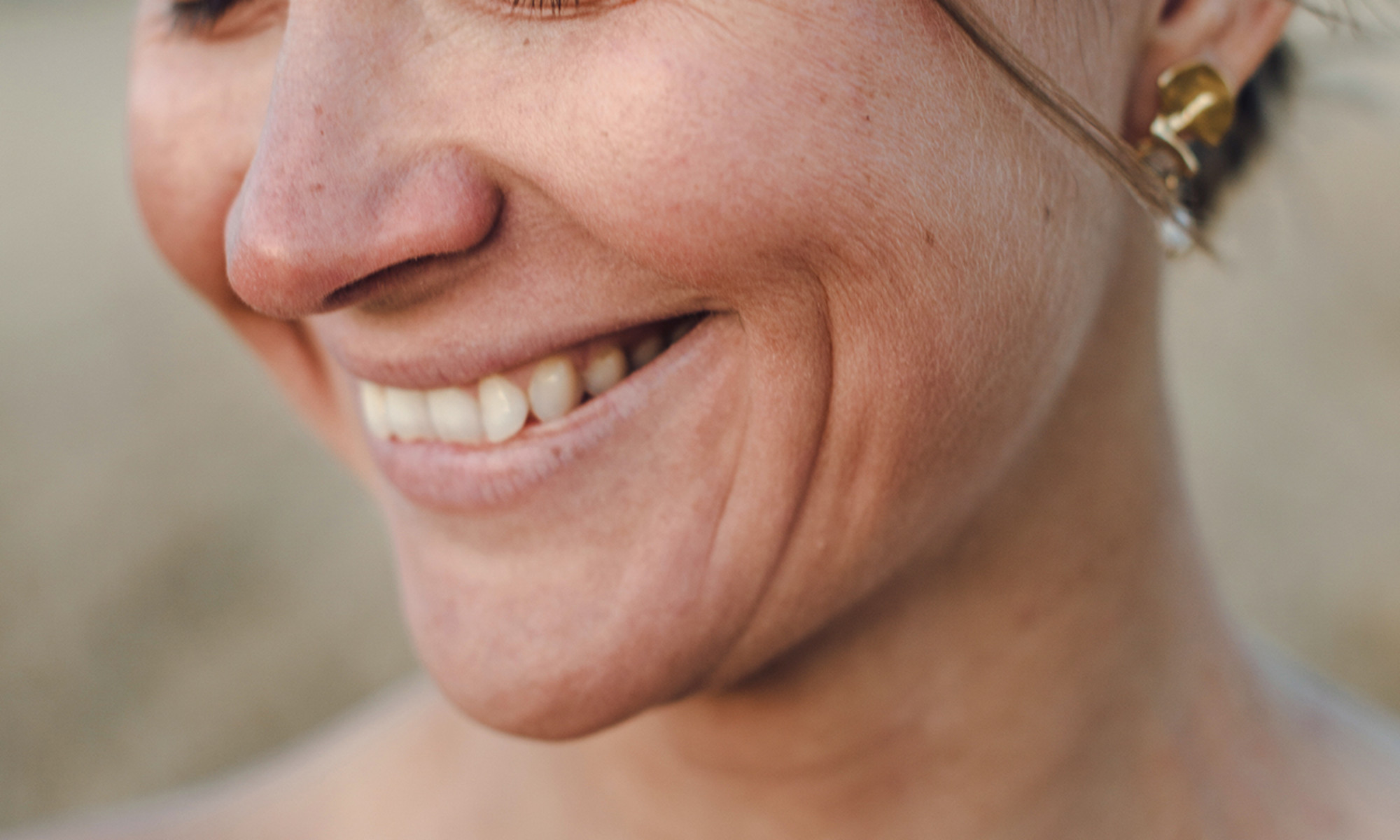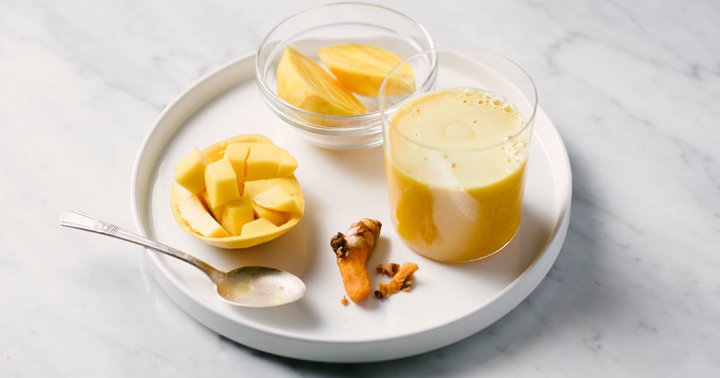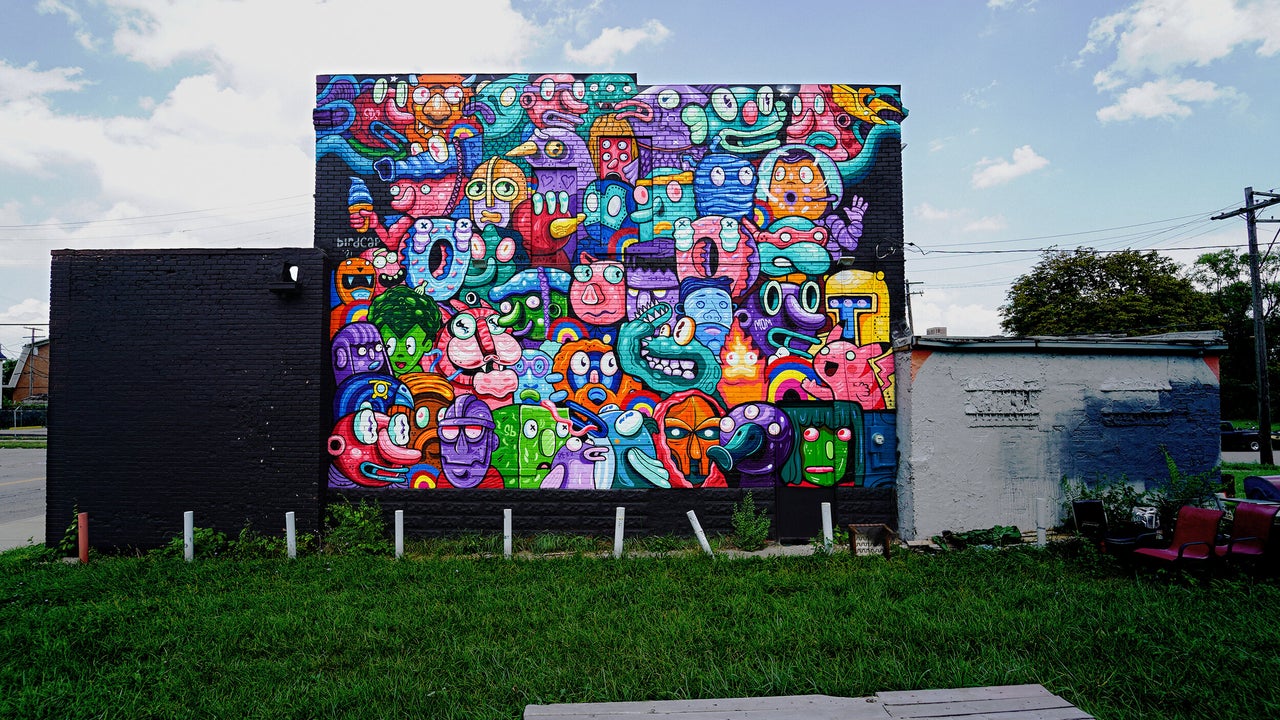3 Surprising Ways Your Face Ages That Have Nothing To Do With Wrinkles
Aging is complex and nuanced. It involves much more than just simple fine lines and wrinkles. Here, 3 surprising ways that your face ages.


mbg Beauty Director
mbg Beauty Director
Alexandra Engler is the beauty director at mindbodygreen and host of the beauty podcast Clean Beauty School. Previously, she's held beauty roles at Harper's Bazaar, Marie Claire, SELF, and Cosmopolitan; her byline has appeared in Esquire, Sports Illustrated, and Allure.com.
Image by OLGA MOREIRA / Stocksy July 31, 2023 Our editors have independently chosen the products listed on this page. If you purchase something mentioned in this article, we may When we talk about skin and facial aging, attention often goes to fine lines. Avoiding wrinkles, the beauty industry might have us believe, is the end-all-be-all of looking youthful. But in reality, aging is far more complex. There are many factors that influence how a face changes overtime, from bone density and fat volume to strength of the barrier and muscle tone. So addressing signs of aging isn’t as simple as wiping away wrinkles, as there are many other considerations and indicators. Including, but certainly not limited to, these three factors.
Advertisement
This ad is displayed using third party content and we do not control its accessibility features.
Bone loss
As we get older, we lose bone density. The body’s ability to build new bone (aka ossification) diminishes, but the process of bone breakdown (aka resorption) occurs at the same rate. For most, this change starts at around middle-age, with osteoporosis impacting nearly 20% of women and 5% of men1 ages 50 and up. Bone mineral density (BMD) can impact mobility, strength, and yes, even the appearance of the face.
Bone loss is one of the biggest drivers of facial aging according to aesthetics rejuvenation specialist Lisa Goodman, MPAS, founder of Goodskin Clinics. "Aging isn't all about wrinkles—it's about facial balance, the position of things," she says, noting that when our bone structure changes, that information reads as aging. "So at an earlier age, we want to help women retain bone."
Unfortunately, there’s no quick fix for bone health. Rather, it involves being consistent with lifestyle habits. One recent study found that a sedentary lifestyle, for example, was associated with lesser bone density as the participants got older.
There’s also a strong connection between calcium, vitamin D and bone health. When folks don’t consume enough calcium, the body scavengers it from the bones. It’s recommended to consume 1,000 to 1,200 milligrams of calcium daily—and vitamin D helps absorption rate of the mineral.
HA decline
“Hyaluronic acid is a naturally occurring type of sugar that is produced by the body and found in the highest concentrations in our skin, connective tissue, and eyes,” says board-certified dermatologist Jennifer Chwalek, M.D. “It functions to retain water, keep our tissues well lubricated, and our skin looking firm and youthful. It also helps increase collagen production, which is another way it can help our skin as we age.”*
We stop producing it as effectively with age. Research shows that our natural reserve of hyaluronic acid is cut in half by the time we hit our 50s3. And with its loss, the skin becomes more lackluster, dry, and less supple.
While you can apply it topically, research indicates that ingesting it may also be beneficial for skin health. Oral forms of HA have also been shown to support skin hydration4 and appearance.* Check out the best hyaluronic acid supplements here.
Advertisement
This ad is displayed using third party content and we do not control its accessibility features.
Poorer circulation
Circulation declines with age5, which can pose a problem for the skin. Blood flow brings oxygen, minerals, and nutrients to the skin, which are essential for replenishing skin cells. As circulation gets slower overtime, the skin isn’t as able to rejuvenative itself. This leads to a more dull complexion, weakened skin barrier, and textural changes.
Improving circulation really comes down to how you move the body: One of the most important things you can do is to stay active. Exercise increases blood flow6 throughout the body, thereby bringing vital nutrients to the skin.
You can also practice facial massages, which have been shown to improve circulation to the facial area specifically. One study showed that facial rolling for only five minutes a day improved blood flow to the face7.
The takeaway
I wish addressing aging was as simple as smoothing out wrinkles—that’d make my job a lot easier! But in fact, aging is complex and nuanced. It involves much more than just simple folds and etches in the epidermis. If you want to learn more about how you can help your face as you age holistically, check out our all-time best tips for youthful skin.

 Hollif
Hollif 






























